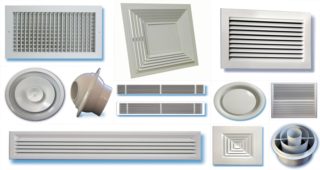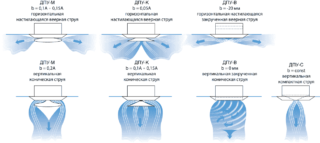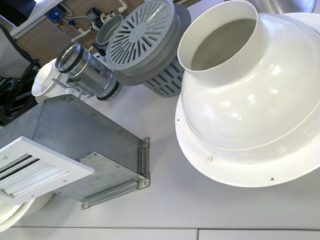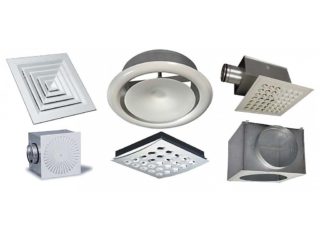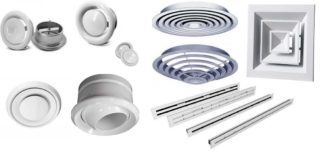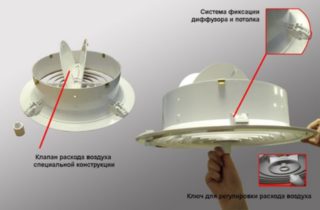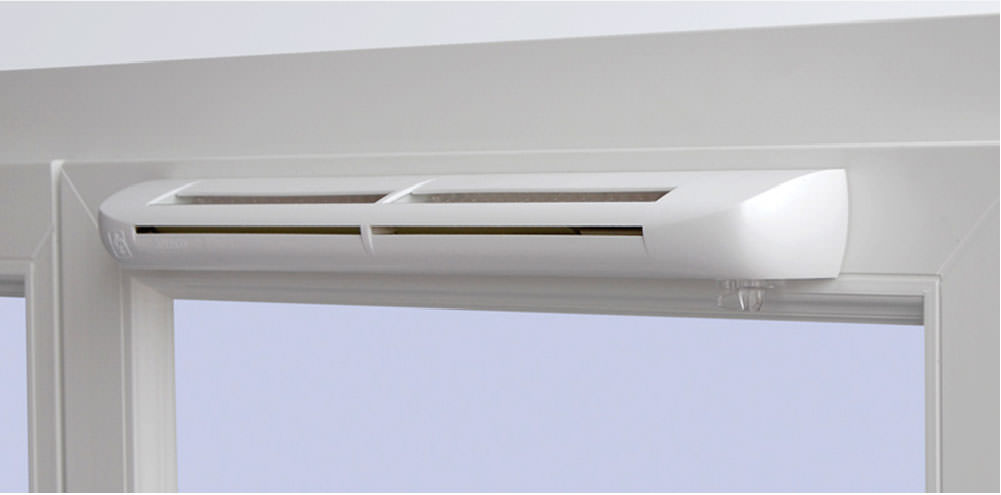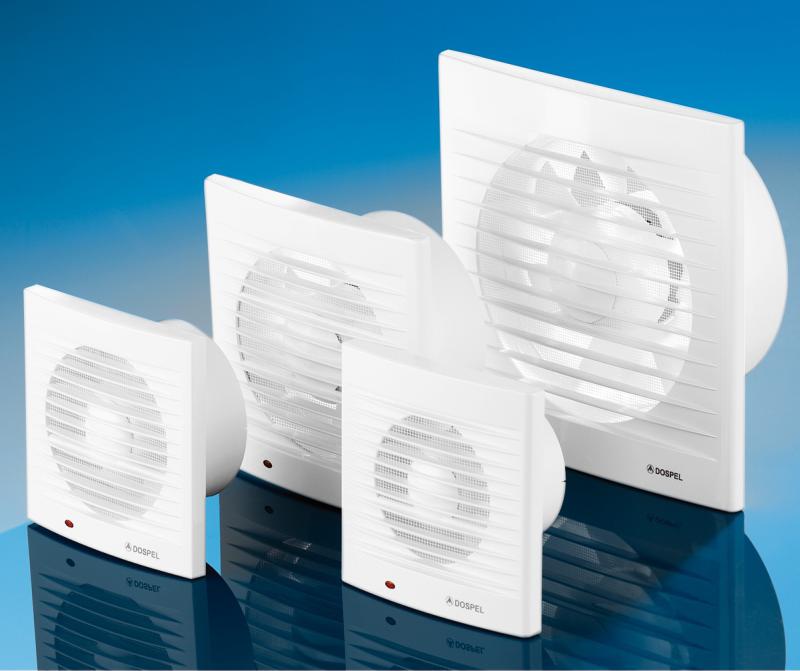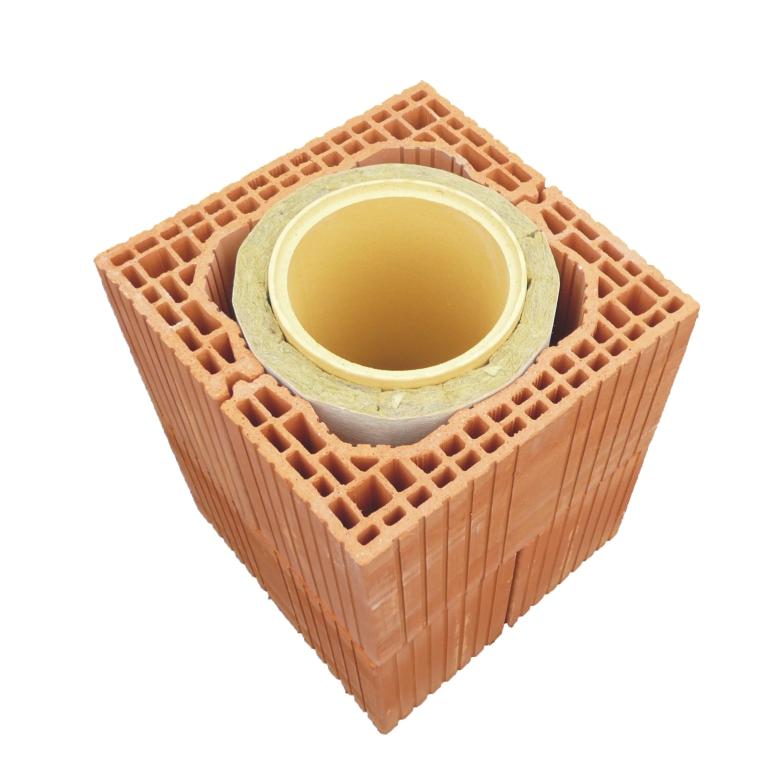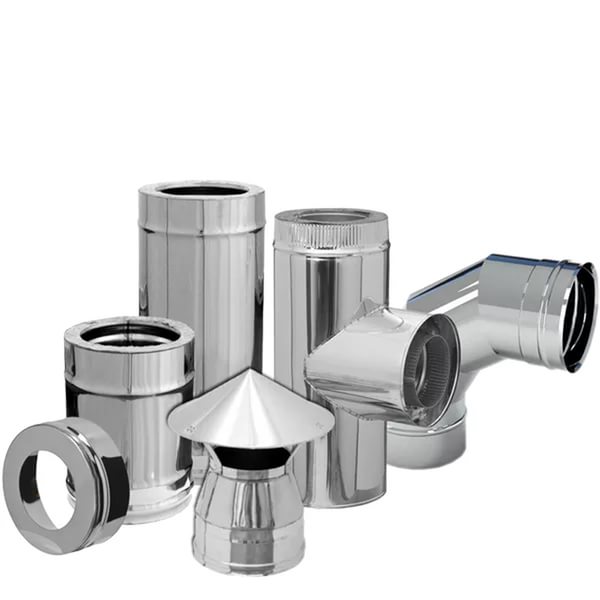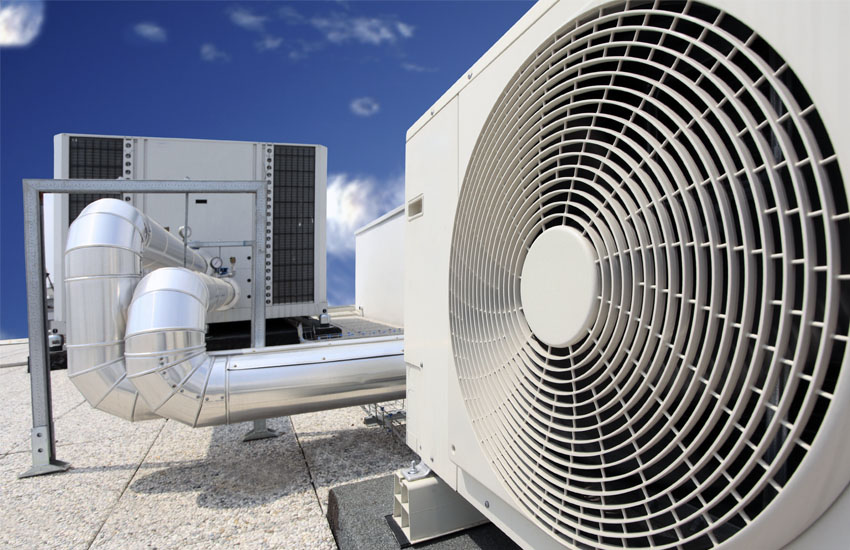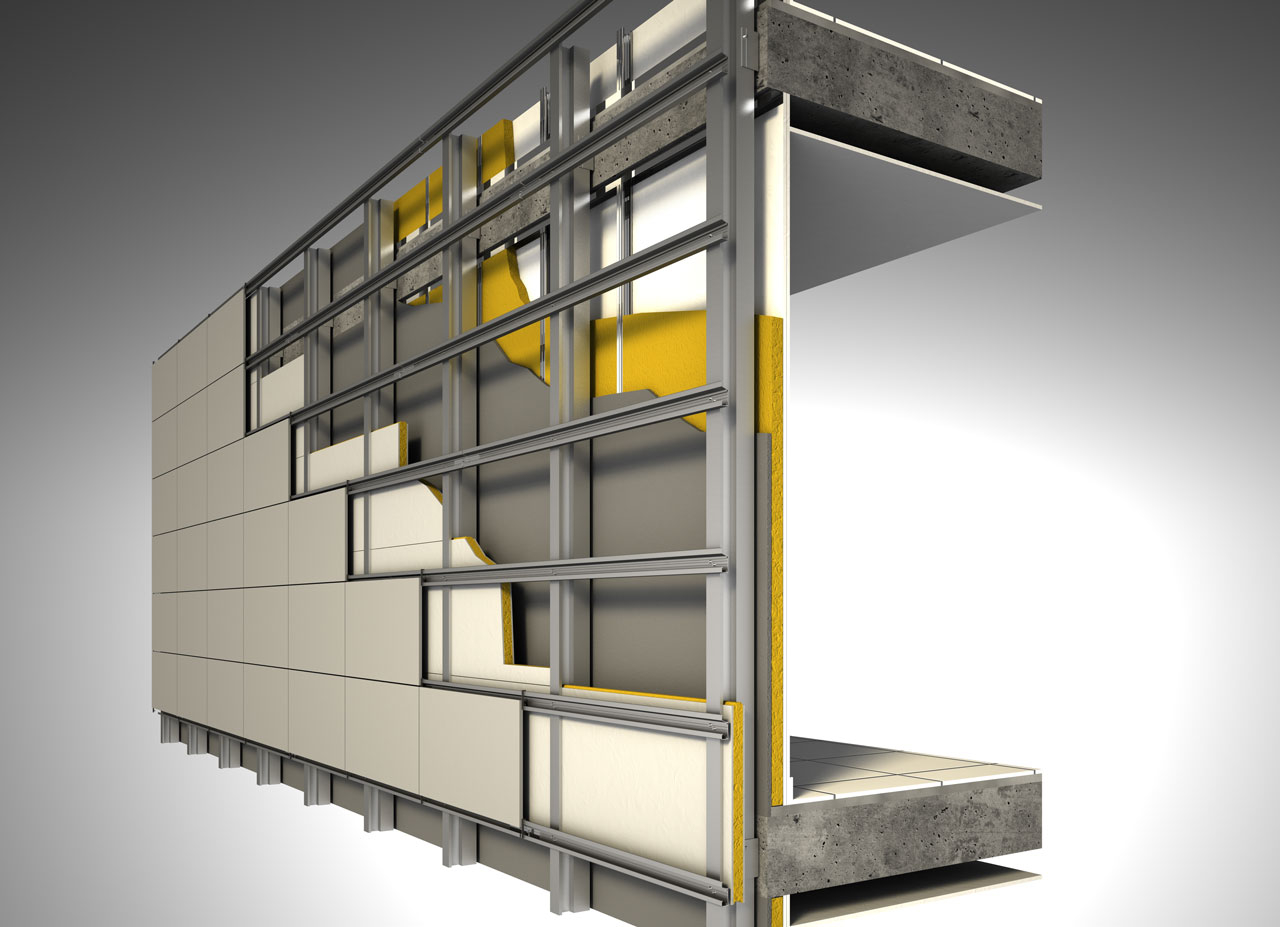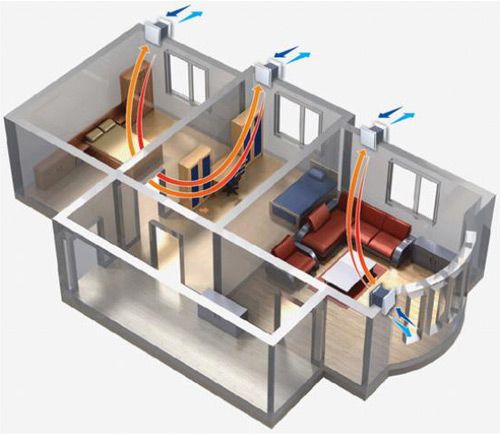The ventilation system of the room is a complex structure. Its essential component is a ventilation diffuser. He is responsible for the even distribution of air throughout the entire area of the space.
What is a ventilation diffuser
The air passing through a conventional grill of the ventilation system ends up at the same point. At the same time, air zones with different temperatures are formed in the room. Its function is to protect the duct from dust and debris accumulation.
The functionality of the diffuser is superior to that of a conventional grille. A diffuser is a structural unit located at the inlet or outlet of an air duct. It has special impellers and blades, due to which the intake of air volume occurs evenly, its distribution in the room is optimal. It makes it possible to use a static pressure chamber with small diffusion holes in ventilation, to change the direction of air movement, its shape.
A vent lattice should be preferred to a diffuser in the conditions of old high-rise buildings. The ventilation ducts work there according to the differential pressure principle. The system exits are in the walls. Installing the diffuser will not change anything. However, if, under these conditions, you make an air duct and hide it in the gap between the false and the real ceiling, the diffuser will facilitate the rapid movement of air currents.
Principle of operation and purpose
The main purpose of the device is the efficient distribution of air flows in space. Exhaust diffusers ensure that there is no draft in the room, no uneven ventilation, no air zones where fresh air does not reach.
The exhaust diffuser modernizes the exhaust system. Without the presence of an air diffuser, the exhaust air is extracted in the form of jets. At the same time, the atmosphere of the room suffers. In addition, the amount of exhaust air passing through the exhaust system depends on the change in the direction of its flow. The air diffuser helps to solve the problem.
Effective ventilation of the room where the ventilation diffuser is used. If the air masses are not dispersed, the ventilation system only ventilates the area where the air is circulating. With the use of a diffuser, fresh air is distributed according to a vortex principle.
Air flow control is another design purpose. You can eliminate the noise of the air walking around the room.
The ventilation diffuser protects the duct entrance and serves as a decorative function.
Advantages and disadvantages of diffusers
The use of the device in the air exchange system of warehouse premises, technical, industrial, commercial facilities is extremely significant. For air exchange in the space of living quarters, ventilation diffusers perform the function of regulating the supply of fresh air from the street and its distribution in different directions.
The ventilation system, equipped with a diffuser, eliminates the presence of stagnant air. The advantage of the design is the ease of use and installation. The devices fit well into the interior of the room thanks to the decorative finish and the choice of the model of the desired color. Of the shortcomings, only the possibility of a draft can be indicated, but this problem is solved using a static pressure chamber.
Classification
Depending on the material used in the manufacture of the product, the following are distinguished:
- Metal diffusers for ventilation, the casing of which is made of conventional or stainless steel or aluminum. Steel models of the ventilation diffuser are not recommended for use in air conditioning systems. Condensation is incompatible with the durability of the air conditioner. In other cases, the metal housing of the diffuser guarantees its strength and durability. The models are significantly superior in weight and price to their plastic counterparts.
- The plastic version of the case is the most common. It has a low weight, an affordable price. The choice is varied in design, shape and color; it is not inferior to metal counterparts in its consumer characteristics. Corrosion resistant.
- The external wooden lattice is in demand and fits the design of baths and saunas.
For private households, plastic structures are more often purchased. Metal models are always installed in production areas.
Diffusers of the ventilation system are round, square, rectangular.
Depending on whether the diffusers are injected or removed, they are of the following types:
- Supply diffusers. They are connected to the opening of the air duct supplying fresh air from the outside;
- Exhaust models act inversely to the supply analogs, respectively, they are connected to the exhaust exhaust system;
- A universal option is a supply and exhaust ventilation diffuser. It can work for air inflow and outflow. But, as a rule, universal models perform a little worse than those designed specifically for the supply or retraction.
- Combined devices have two openings in the casing for simultaneous connection to the exhaust and supply air ducts.
The ventilation diffuser can be mounted in three places: on the ceiling, on the wall, on the floor. In accordance with this, a distinction is made between ceiling, floor and wall models. Floor diffusers are used very rarely when the supply ventilation passes through the basement. Wall mounted designs are also rare. Ceiling models are mainly common in practice.
Design features
- Vortex models are in demand in rooms where fast air exchange is important. For example, bathroom, kitchen, toilet. The design increases the speed of air flow, its high-quality mixing. This is achieved by a special radial arrangement of the bridges. The air flow passing through them swirls like in a funnel. The internal structure of a ceiling vortex model usually has the shape of a cylinder, a lattice of any shape with holes located necessarily around the circumference. Can be equipped with an additional impeller behind the casing grille. If the impeller is movable, this makes it possible to control it, choosing the rotation speed, of which there are several.
- The so-called slot diffusers are structurally distinguished by the presence of slots through which air enters. Their number varies depending on the model from 1 to 6, the height is from 0.8 to 2.5 cm. These models are mounted in suspended ceilings, they can have the function of the direction of the air flow. The models are in demand for small rooms where there is a need for low or medium capacity of the ventilation system. Models may have the ability to adjust the direction of air flow (like the blinds of air conditioners). They can be of any shape, including narrow and long ones.
- Jet models have a supply diffuser. There are standard and flexible designs. Their peculiarity is that fresh air enters in the form of jets, while the range and speed of its supply increase.
- Perforated models can work both for supplying and removing air from the room. They are equipped with many small holes through which air passes, evenly and balanced distribution in space.
Adjustable models of air diffusers have sliding plates in their design, with which you can change the throughput. They are also called anemostats. Adjustment is made by turning clockwise or vice versa, the central part of the device. At the same time, the movably fixed lamellas close or open the paths of air movement.
If the diffuser is part of an expensive and complex climate monitoring system, it may have sensors that analyze the composition of the air.
How to choose a diffuser for ventilation
- Section dimensions. This parameter must match the diameter of the duct to which the product will be connected.
- The second important requirement is the correspondence of the throughput of the product to the needs of the equipped living space.
- The material of the enclosure must correspond to the nature of the room and the temperature of the transmitted air in it. If the product will be located outside, it is better to choose a diffuser model with a metal case, if inside, a plastic version will do. In this case, the material of the ventilation duct should also be taken into account. Plastic goes well with plastic, metal with metal.
- The range of products produced by the industry has many decorative solutions. The choice of a diffuser according to this criterion is possible in order to match the style of the room or the taste of the buyer.
Installation methods
- Into an existing air vent in the wall;
- To rigid or flexible duct material;
- Used as an intermediate link between the product and the internal ventilation outlet of the plenum box.
All models of the air diffuser structurally have means for fixing when connected. These are latches or holes for self-tapping screws.
When fastening to a rigid material, the parameters of the structure and the input product must match so that the product can be installed in the opening. A tee splitter is used, which is inserted into the ventilation pipe. The device is connected to a third, free output. In this case, the outlet of the tee is selected to the size required for the device. So that it is convenient to connect them. Reliable fixation is indicated by the latches, which, when they are fixed, emit a characteristic sound.
For suspended ceilings, the fixing is similar to recessed luminaires. Heavy weight models are installed using hangers or pins to a real ceiling or self-tapping screws.
When the diffuser is connected to a soft metal sleeve or corrugation, the flexible metal end is pulled out of the ventilation duct first. Next, the product is connected to it. Then the corrugation goes back into the hole, followed by the diffuser. The end of the input will end with a characteristic click, which means the latches are triggered.The diffuser must connect evenly with the hole in the ceiling or wall. There should be no gaps.
The static pressure chamber or adapter prevents excessive ventilation. But it is mounted in a fairly large gap between the real and the false ceiling. The fact that they "steal" the height of the ceiling is a disadvantage of their use. The plus is the absence of drafts. The principle of its effective action is in uniform mixing in the tank of the chamber of air flows and its even supply through the surface of the grate.
Externally, the structure is a parallelepiped, the diffuser hole is at the bottom. On the side or top there is an opening for a ventilation pipe of various sizes.
Adapters come in different models: with removable filter, with rotary valve, with air mass divider. Standard adapters are available in plastic or steel.
In the ventilation system, diffusers perform a certain important function. Often they are considered insignificant elements of the system. But this opinion is erroneous, because the correct organization of the air flow, for which this element of the system is responsible, determines the functionality of the system as a whole.

